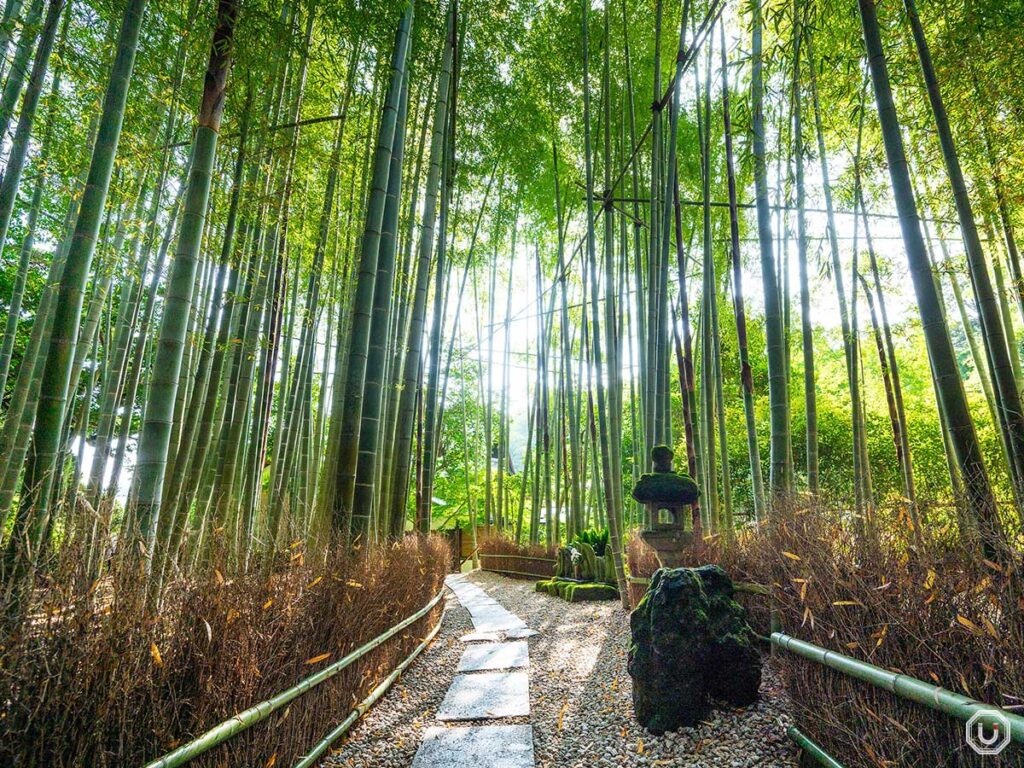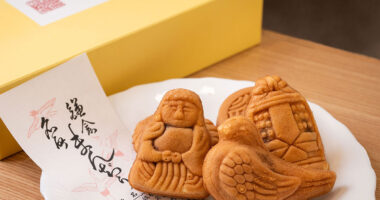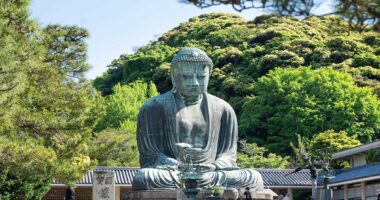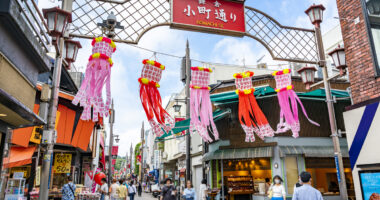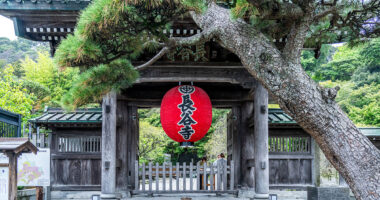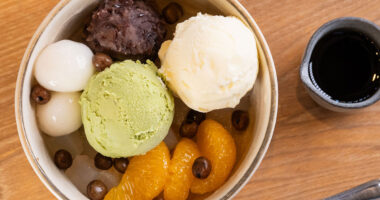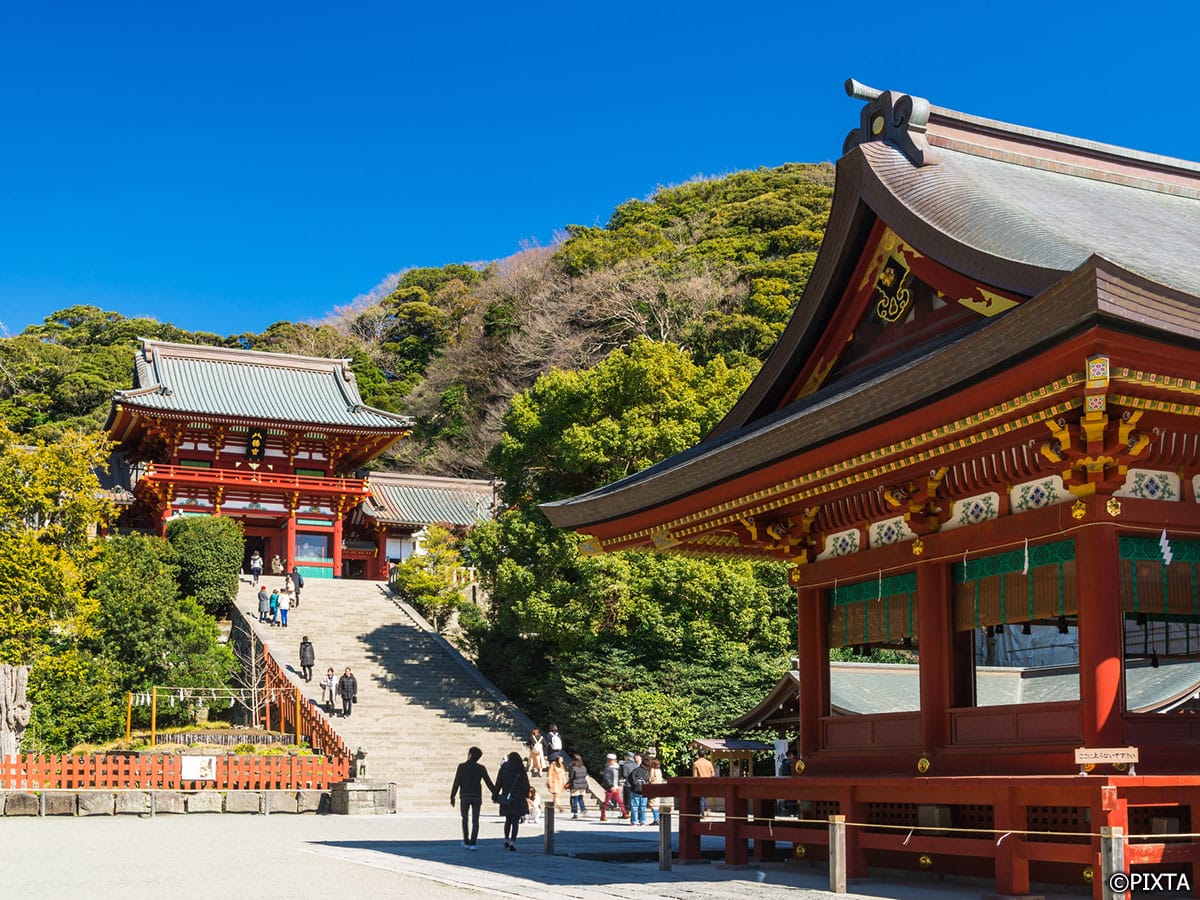Kamakura in Kanagawa Prefecture is a popular tourist destination with many temples and shrines that date back to ancient times.
Each temple and shrine has its own attractions, but Hōkokuji Temple (which introduces itself in English as “Houkokuji Temple”) is especially known for its beautiful bamboo grove.
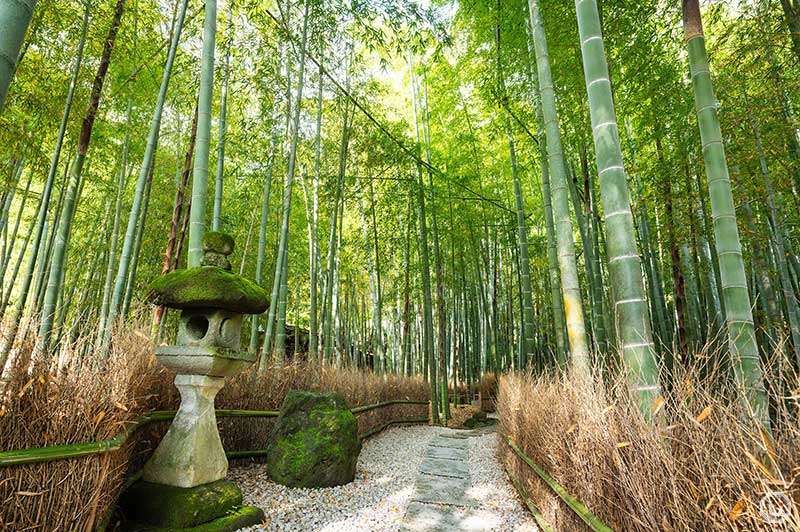
Enjoy the seasonal beauty of Houkokuji Temple’s Japanese garden
As you pass through the sanmon (the main gate of a Buddhist temple) at the entrance, you’ll be greeted by a stunning Japanese garden covered in moss.
It’s particularly vibrant after rain, and the garden, glistening in the sunlight, is so captivating that you might lose track of time.
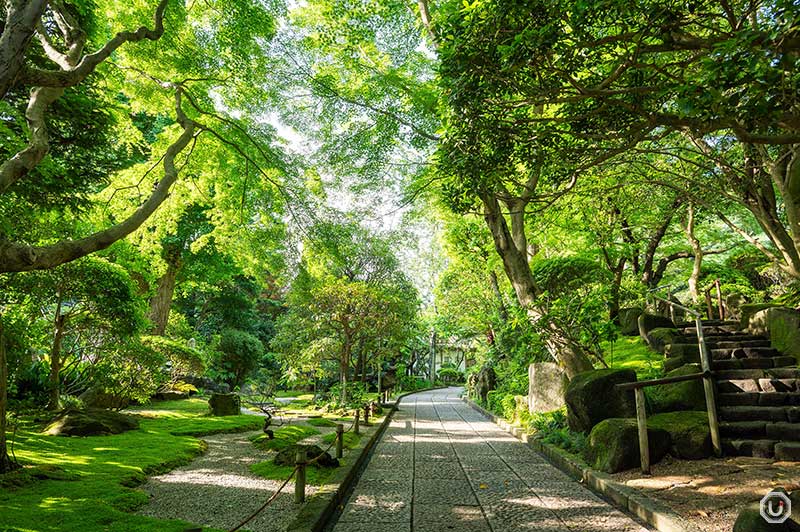
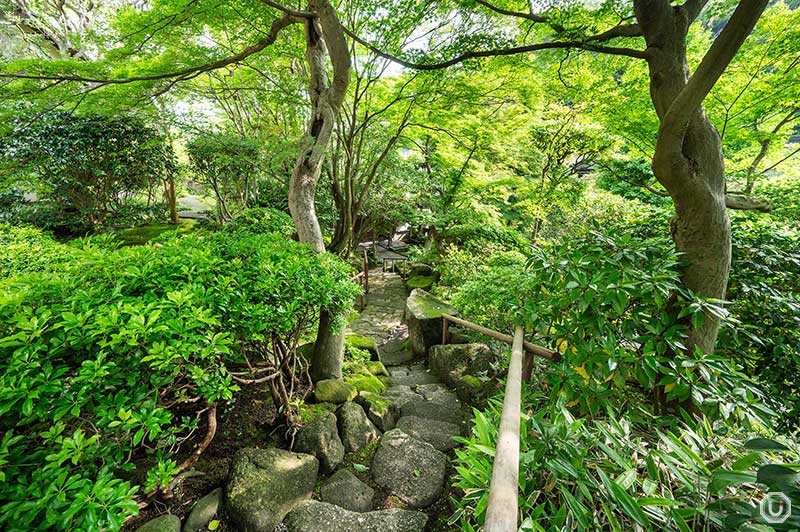
Houkokuji is also known as a famous spot for moss, attracting many visitors who come specifically to admire the garden. The temple is home to several types of moss, each with its unique shape that you can observe up close.
The moss embodies the Japanese aesthetic of wabi-sabi, appreciating the beauty in imperfection and transience. If you’re looking to experience the charm of moss, Houkokuji Temple is the perfect place.
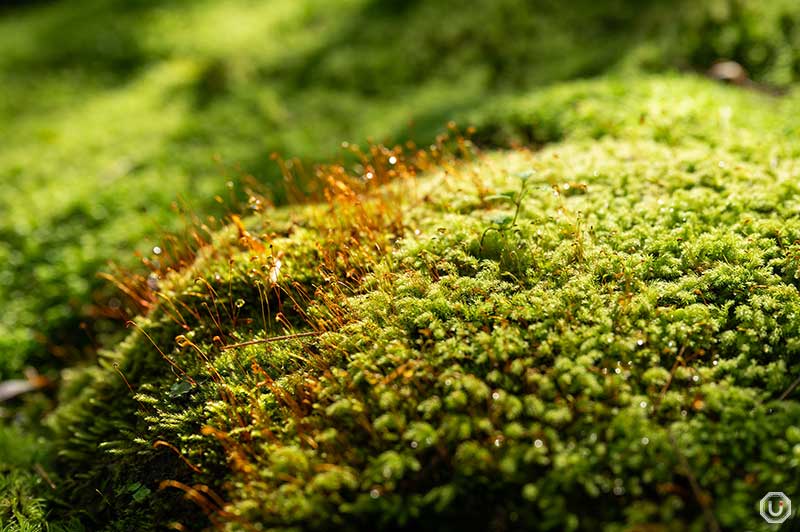
The historic buildings of Houkokuji Temple
Passing through the garden, you will see the main hall.
When visiting Houkokuji Temple, the proper way to pay respects is to place your palms together in front of the Buddha and bow deeply. There’s no need to clap your hands.
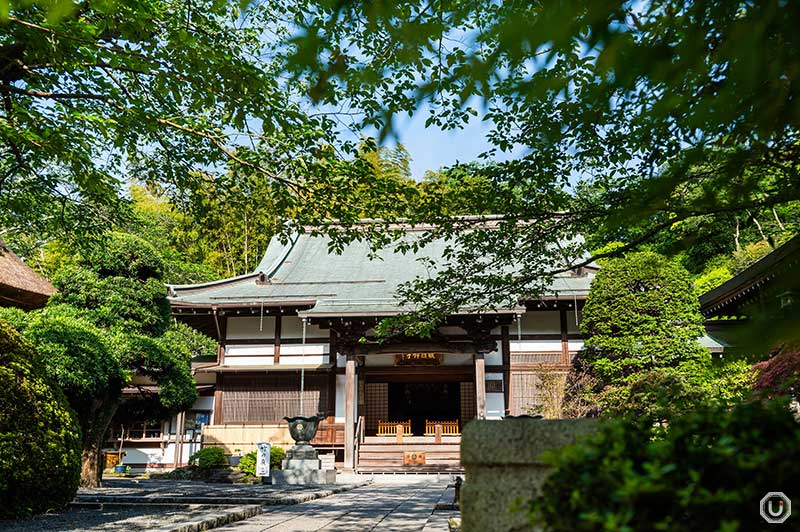
The main hall at Houkokuji Temple
To the left of the main hall is the bell tower with a thatched roof, the oldest structure at Houkokuji Temple, built in 1757. Originally, all the buildings had thatched roofs, giving a sense of the temple’s historical atmosphere.
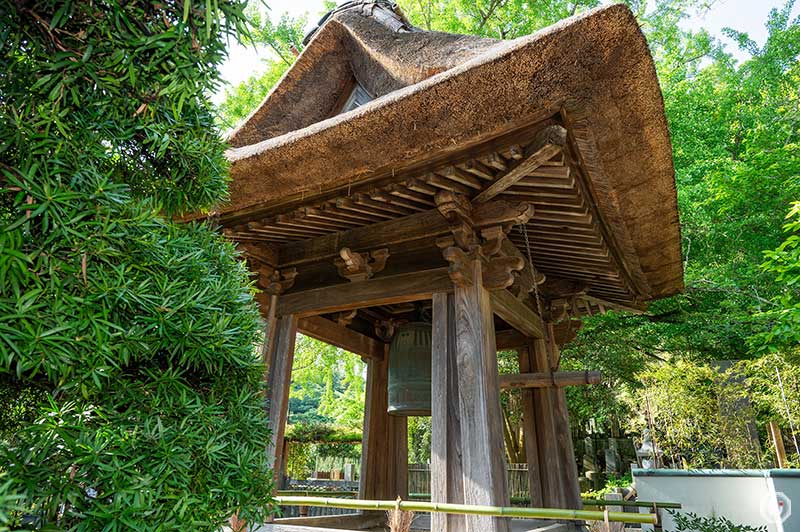
The bell tower at Houkokuji Temple
The bamboo garden that changes with the seasons and time
Beyond the main hall lies Houkokuji Temple’s iconic bamboo garden.
To enter, you need to pay an admission fee at the entrance: 400 JPY for high school students and above (ages 16 and above), and 200 JPY for elementary and junior high school students (ages 6 to 15).
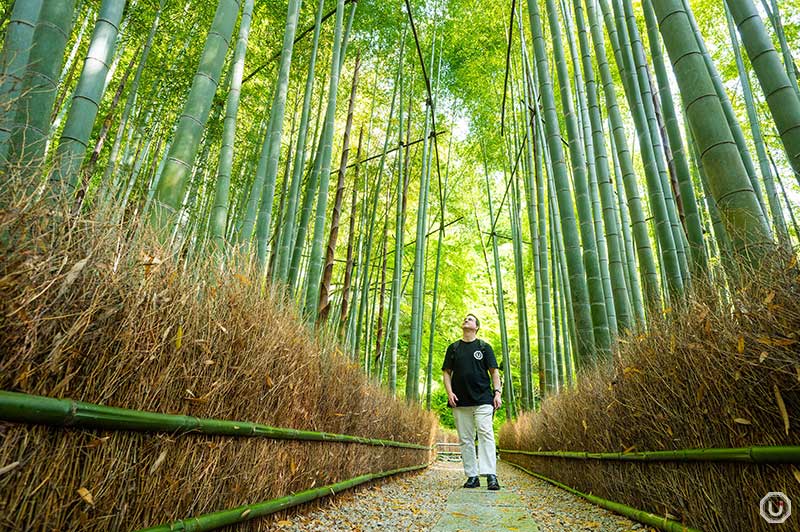
An admission fee is required to enter Houkokuji’s bamboo garden
The sound of bamboo leaves rustling in the wind, gentle sunlight filtering through, and the serene atmosphere make Houkokuji Temple’s bamboo garden a perfect place to enjoy tranquility.
On rainy days, drops dripping from the leaves add another layer of charm to the garden, making each visit a unique experience.
As a measure of protection, visitors are not allowed beyond the fences. The beauty of Houkokuji’s bamboo garden endures thanks to visitors who respectfully follow this rule.
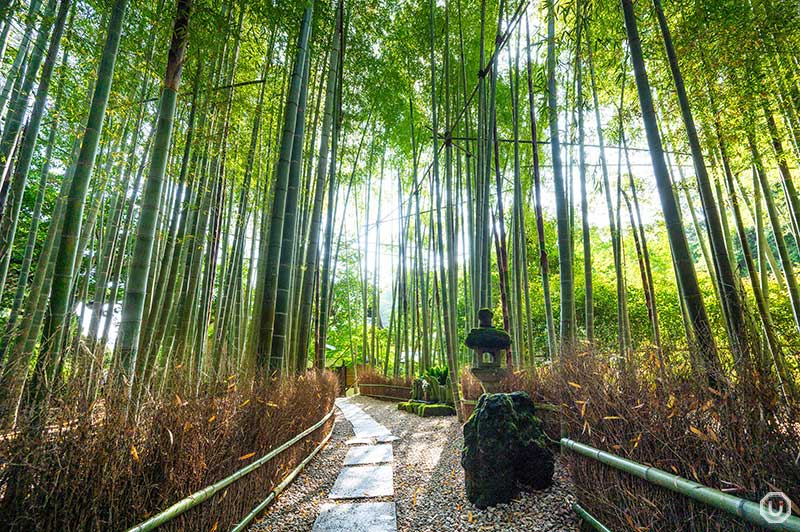
The garden is maintained by gardeners and temple staff
In addition to the bamboo garden, you can also admire their karesansui. Sometimes known as a “Zen garden” in English, it’s a type of stone garden unique to Japan. Located near the sanmon gate, and featuring aesthetically arranged rocks, sand, and gravel, the karesansui has a different aesthetic from the lush Japanese garden.
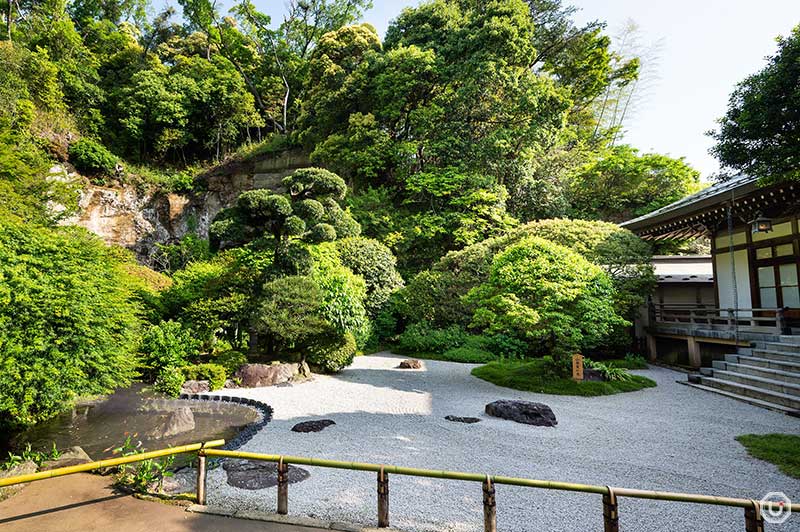
Houkokuji’s karesansui stone garden
In the back of the stone garden, you can see a yagura (cave tomb) the type of which are common in the Kamakura area. Research is still ongoing, but the one in Houkokuji Temple is believed to be the tomb of Ashikaga Ietoki, an important figure in the Kamakura shogunate, and his descendant, Ashikaga Yoshihisa.
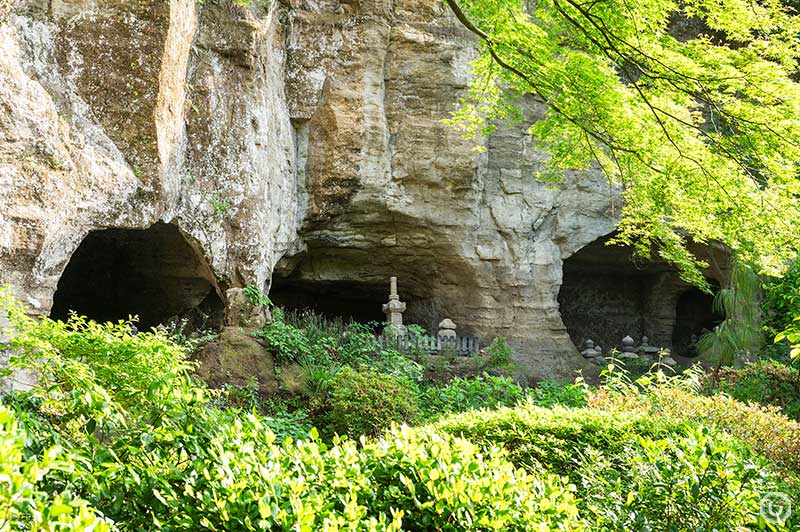
The yagura (cave tomb) at Houkokuji Temple
Savoring matcha while gazing at the bamboo garden
At the Kyūkōan tea house, adjacent to the bamboo garden, you can enjoy matcha and higashi (a type of traditional dry Japanese confectionery) from 9:00 AM to 3:30 PM. The interior of Kyukoan is designed to blend with the bamboo grove, allowing you to enjoy the beautiful view from any seat.
A small artificial waterfall nearby creates a soothing sound of water hitting the rocks.
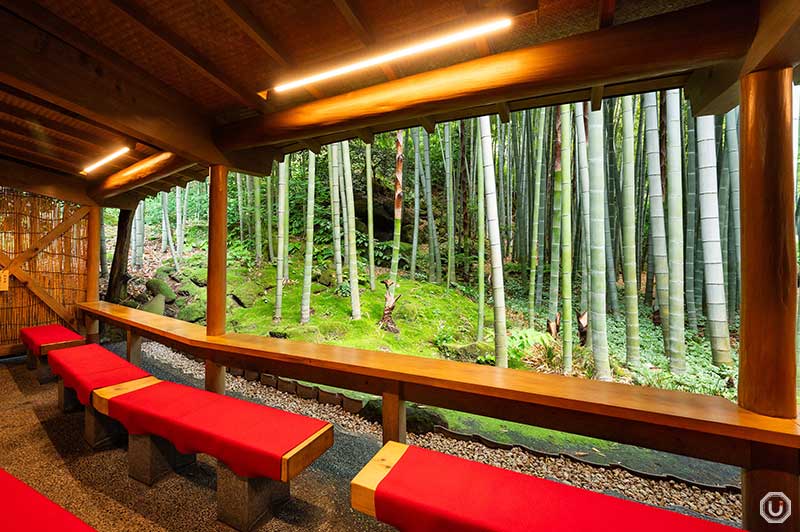
Interior of Kyukoan
Sipping matcha and savoring higashi while gazing at the bamboo garden is truly a refined indulgence. In this serene space, listening to the gentle sounds of nature will refresh both your mind and body.
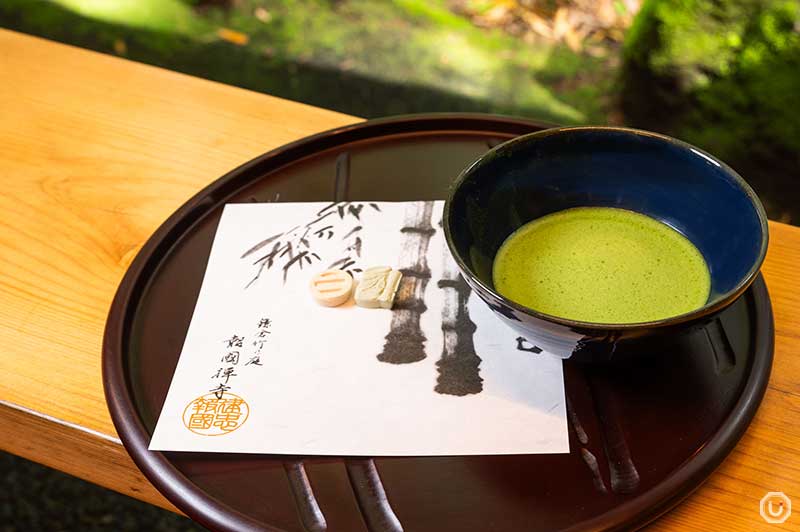
The design of their higashi changes with the seasons
Access to Houkokuji Temple from Kamakura Station is recommended by bus
Houkokuji Temple is about a 30-minute walk from Kamakura Station.
Alternatively, you can take a Keikyu bus from Kamakura Station to a stop near Houkokuji Temple, which takes about 12 minutes. Buses run every 10-20 minutes, with 3-4 buses per hour. Get off at the Jōmyōji bus stop.
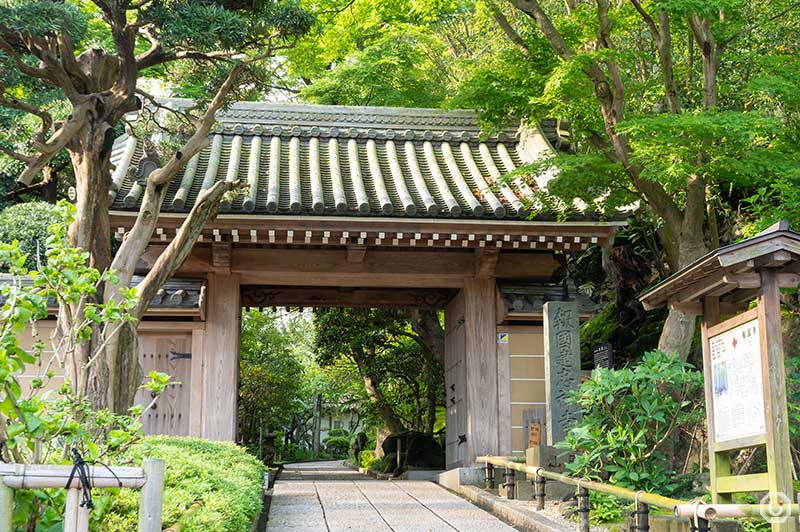
Houkokuji Temple’s sanmon gate opens at 9:00 AM
Loved by renowned writers and artists for centuries, Houkokuji Temple continues to attract visitors from both Japan and abroad for its bamboo garden and Japanese garden.
When you visit, you will surely understand why Houkokuji has fascinated people for so long.
Temple information
| Name | 報国寺 Houkokuji temple |
|---|---|
| Address | 2-7-4 Jōmyōji, Kamakura-shi, Kanagawa Prefecture
|
| Access |
Kamakura Station 30-minute walk from Kamakura Station East Exit
|
| Phone number | 0467-22-0762 |
| Visiting hours | 9:00-16:00 |
| Sacred items | Not available |
| Goshuin | 9:00-16:00 |
| Omikuji | Not available |
| Admission fee | Bamboo forest admission fee: high school students and above (ages 16 and above) 400 JPY, elementary and junior high school students (ages 6 to 15) 200 JPY |
| Official websites | https://houkokuji.or.jp/en/ https://www.instagram.com/houkokuji_official/?hl=ja |
| Other information |
|
※The information in this article is current as of May 2024.
